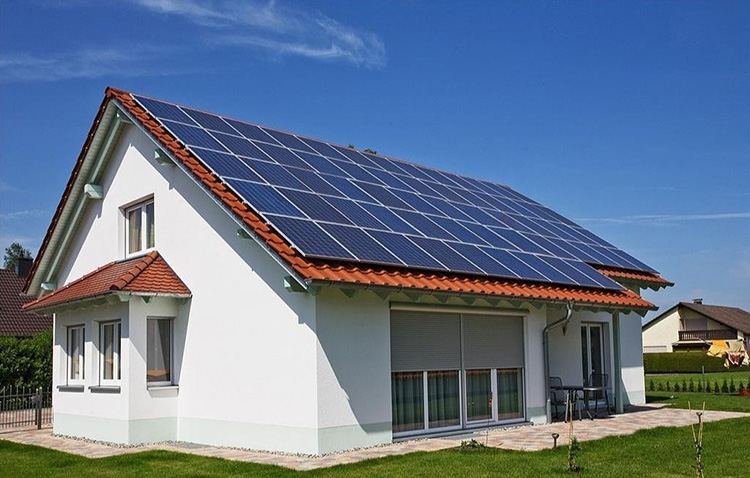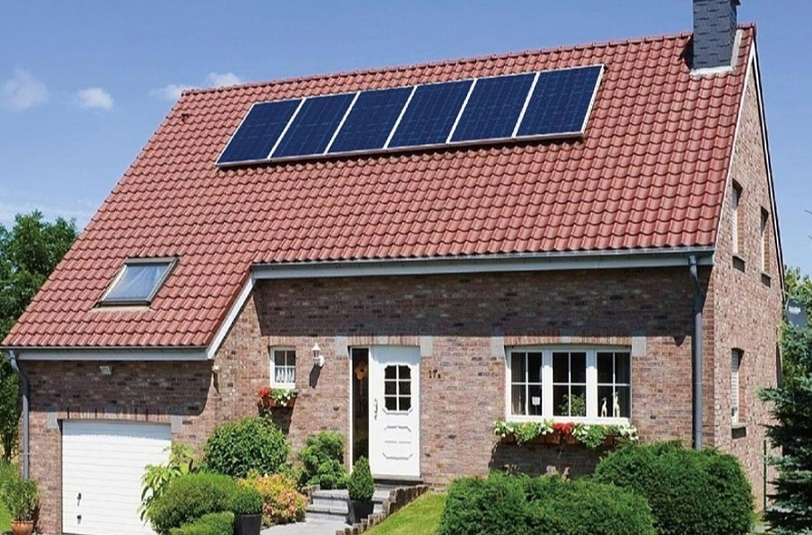How to Size Grid-Connected Solar Electric Systems?
The easiest way to size your solar electric system is to have a professional come to your home and perform a site analysis and load assessment. Solar electric professionals have the experience and tools necessary to gather the data needed for the calculations. Most will supply predesigned package systems that range from one kilowatt (kW) for a small energy-efficient home up to 2.5 kW for a large home. However, if you want to determine the size of the system yourself, the following two-step process will help you to estimate the number of solar panels (sometimes referred to as modules) required, the size of your inverter, and if desired, the size of batteries to buy for backup power. Remember, the goal of the sizing process is to yield a rough estimate of the number of kilowatts your solar electric system should generate. In short, you want to size your solar electric system to meet no more than your whole load on the sunniest day of the year, and rely on some grid power during winter or cloudy days.

STEP 1: Collect Data.
Sizing your proposed solar electric system requires knowing the answers to the following questions:1. What is your monthly electrical usage?
Your utility bills will show you how many kilowatt-hours of electricity you use on a monthly basis. (A kilowatt-hour is equivalent to 1,000 watt-hours.) Your utility may be able to provide you with your home's historical use. If you do not have your utility bills, you can calculate the watt-hours of each appliance you use, which is simply how many watts the appliance uses times the number of hours it runs in a day. If its wattage is not listed, check its amperage rating. Because amps x volts = watts, if your appliance runs at 2 amps, and your household current is at 120 volts (typical), then the appliance uses 240 watts. Total the wattage rating of each appliance and how many hours you use it to calculate your daily energy use. Remember that some of your appliances, such as your refrigerator, operate only part of every hour.
2. How much can you reduce your electrical use?
In residential settings, it is almost always less expensive to reduce energy use than it is to purchase more renewable energy generating capacity. As a general rule, for every $1 spent in conservation or energy efficiency, you could save $2 or more in solar electric system cost. For example, a new energyefficient refrigerator, which can cost $1,000, could reduce your energy consumption by 360 kilowatt-hours per year compared to the old model. The additional cost of a larger solar electric system to run your old model could be around $2,000. Thus, the newer model would save you $1,000 and use less energy.
3. What percentage of electrical needs do you want to meet with your system?
Although you may want to generate all of your electricity with the sun, many solar electric system owners begin with a small system to supplement their main supply of electricity. A small system means fewer up-front costs and the ability to gauge how much generating capacity is necessary to power the entire household. It is more costeffective to choose a system that meets most of your needs, and rely on the grid for those times of extreme energy use, than to purchase an oversized system. Many grid-connected homeowners operate solar electric systems to mitigate the pollution central power plants generate and have backup electricity in case of power outages. Your values and goals may ultimately determine the percentage of your electrical needs you meet with your solar electric system. Solar panels are modular, thus the term "module", so you can even add more panels later if the balance-of-system (inverter and other electrical components) is designed for it.
4. What is the amount of sunlight available at your site?
When sunlight reaches the Earth, it is distributed unevenly in different regions. Sunlight varies with the seasons, as the rotational axis of the Earth shifts to lengthen and shorten days with the changing seasons. For example, the amount of solar energy falling per square meter on Yuma, Arizona, in June is typically about three times greater than that falling on Caribou, Maine. The quantity of sunlight reaching any region is also affected by the time of day, the climate (especially the cloud cover, which scatters the sun's rays), and the air pollution in that region. Likewise, these climatic factors affect the amount of solar energy that is available to PV systems.

STEP 2: Use Data to Size System.
With the previous information, you can estimate the size of the solar system you need.1. Determine number of solar panels needed.
The number of solar panels needed to power your home will depend on the amount of power you will offset with solar energy. The amount of power offset can be anywhere from 25% to 100%.
2. Determine solar inverter size.
Solar panels produce direct-current (DC) electricity, so you will need a solar inverter that can change DC watts into alternating-current (AC) power to run your appliances. While solar panels are sized to meet daily energy load, an inverter is sized to meet the peak load, which is the sum of the power for all appliances that could be used simultaneously. For backup systems, the inverter must handle the peak loads of your vital appliances—the total watts you are using at any given moment. This figure is determined by summing all the wattage you use at the same time. Your peak wattage will likely occur when you are running large appliances simultaneously. Inverters should be sized to 25% more than your expected peak load to handle this situation. In addition, make sure your inverter is rated to handle surge loads, which occur when electrical devices start up and may require six times their normal power (when the power from the utility is on, the incoming current handles the surge loads).
3. Determine size of battery bank.
You will need a battery bank if you want to maintain backup power in case of outages. The battery bank must be large enough to store electricity for the duration of the outage and be able to provide power to the inverter during peak demand. Remember that you will extend the life of your batteries if you discharge 60%–70% of their capacity; thus, you will need to upsize your bank accordingly.